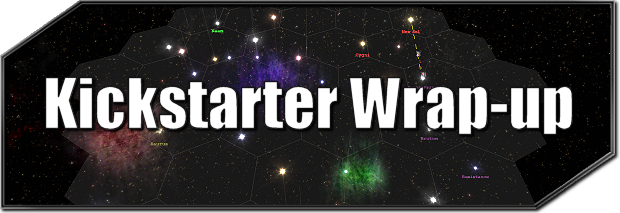Last week Predestination officially succeeded on Kickstarter! Thanks to a huge push in the last few days of the campaign, we managed to hit over double our initial goal and smashed the three biggest stretch goals. We’ll now have a full singleplayer story campaign, play-by-email and full online multiplayer for release.
We’ve decided to wrap up the campaign in the same spirit of transparency that we intend to keep up during Predestination’s development, so I’m releasing a ton of stats that are normally kept for the project creator’s eyes only and discussing some of the lessons we learned throughout the campaign. This kind of info from previous projects was invaluable when I was researching and putting together this campaign. I posted this originally as a Kickstarter update, but am posting it as a blog post so it can reach more future Kickstarter project creators. It’s a bit of a wall of text, but hopefully future Kickstarter creators will find it useful!
(More updates on the way)







